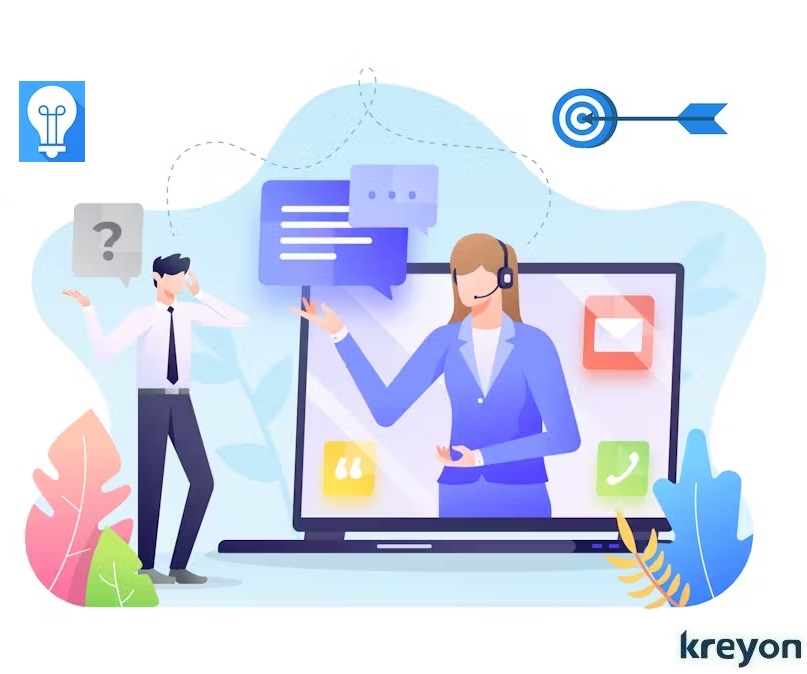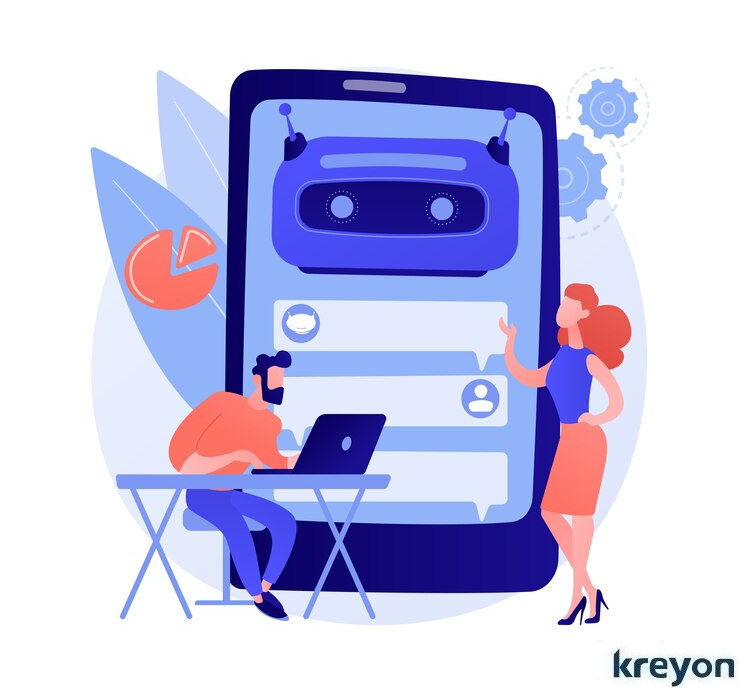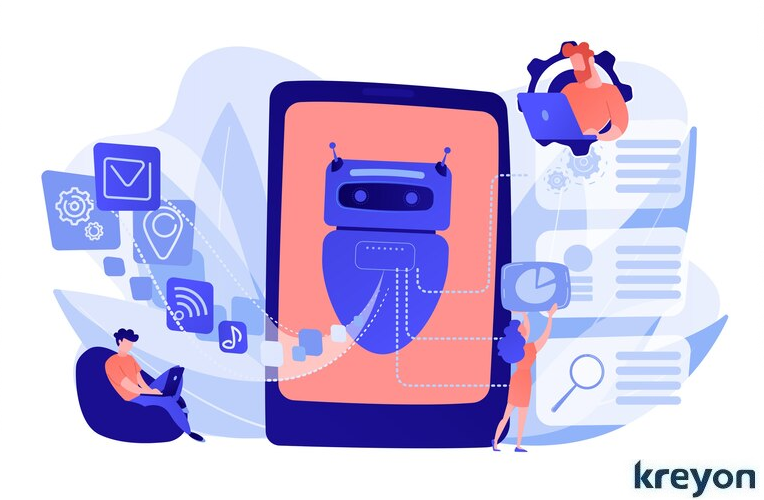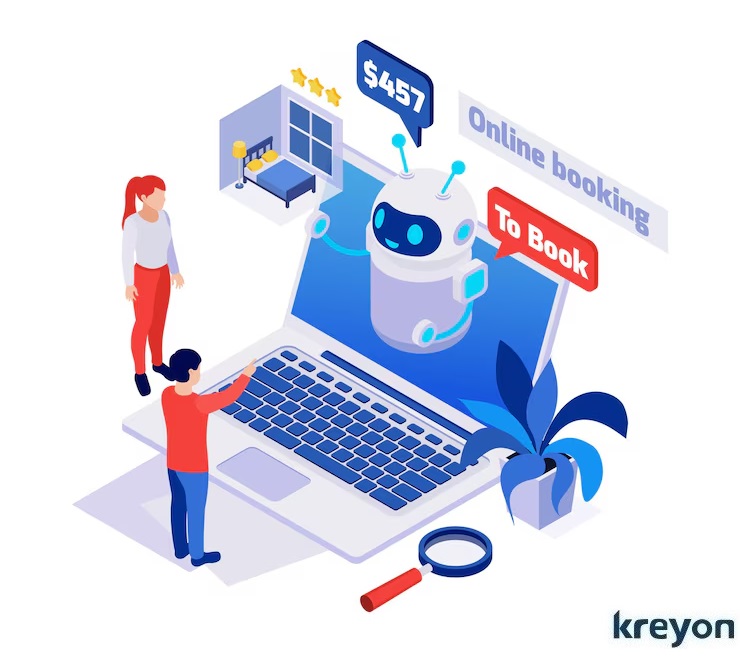Enhancing Customer Experience: The Power of AI-driven Customer Service Automation

Customer service automation is the new frontier for shaping customer loyalty and brand perception. As the ever-evolving landscape of business operations, customer service remains a pivotal element in shaping brand perception and fostering customer loyalty.
With expectations for immediate, personalized service continue to rise, businesses are increasingly turning to Artificial Intelligence (AI) to streamline their customer service operations.
AI is redefining customer service automation, empowering businesses to deliver exceptional experiences that keep customers coming back for more.
But poor implementation can backfire, for e.g. you have a genuine concern about a product, but the chatbot keeps sending you irrelevant pre-written responses. Frustrating, right?
Don’t let AI turn your customer service into a robotic nightmare. Focus on natural language processing (NLP) that allows chatbots to understand the context of a conversation and respond with empathy.
Here we explore how AI-driven automation can revolutionize customer service, offering business owners insights into its benefits, practical applications, and strategic implementation.
The Changing Dynamics of Customer Service
Customer service is no longer just about resolving complaints or answering queries; it’s about delivering exceptional experiences that delight customers and differentiate brands from competitors.
Traditional customer support models often struggle to keep up with the demands of today’s consumers who expect instant responses and personalized interactions across multiple channels.
Using AI-powered automation, a transformative technology that enables businesses to deliver efficient, proactive, and personalized customer service experiences at scale.
By leveraging AI capabilities such as natural language processing (NLP), machine learning (ML), and predictive analytics, companies can enhance operational efficiency, optimize resource allocation, and elevate overall service quality.
Bank of America’s chatbot Erica uses NLP to understand customer intent and provide personalized solutions. This human-centric approach fosters trust and keeps customers engaged.
Key Benefits of AI-driven Customer Service Automation

AI encompasses a range of technologies, including chatbots, virtual assistants, and machine learning algorithms. These tools work together to create a seamless and intelligent customer service experience. Here’s how:
24/7 Availability: AI-powered chatbots and virtual assistants enable businesses to provide round-the-clock customer support, addressing inquiries and issues promptly regardless of time zones or business hours. This ensures a seamless experience for customers, enhancing satisfaction and loyalty.
Improved Response Times: AI systems can analyze and respond to customer queries in real-time, significantly reducing wait times and enhancing responsiveness. This immediacy is crucial in preventing customer frustration and improving overall service efficiency.
Personalized Customer Interactions: Through AI-driven insights and data analytics, businesses can personalize customer interactions based on preferences, past behavior, and transaction history.
AI algorithms can anticipate customer needs, recommend relevant products or services, and tailor responses to individual preferences, fostering deeper engagement and loyalty.
Cost Efficiency: Automating routine customer service tasks with AI helps businesses optimize operational costs by reducing the need for extensive human intervention.
This allows human agents to focus on more complex issues that require empathy and problem-solving skills, maximizing productivity and efficiency.
Scalability: AI-driven customer service solutions are inherently scalable, capable of handling a growing volume of customer interactions without compromising service quality.
Whether it’s handling a few inquiries or thousands simultaneously, AI systems can adapt and perform consistently.
Tools for Customer Service Automation

The customer service automation landscape offers a variety of tools, each with its own strengths that can help your business:
1. AI-powered Chatbots and Virtual Assistants
AI-powered chatbots simulate human conversation and can handle a wide range of customer inquiries, from simple FAQs to complex troubleshooting. These chatbots learn from each interaction, continuously improving their responses and accuracy based on real-time data and customer feedback.
A customer with a technical issue gets stuck in a chatbot loop designed for simple questions. This leads to a dead end and a frustrated customer. Ensure your automation tools have clear escalation paths. Offer options to connect with a live agent for complex issues that require human intervention.
These advanced tools use natural language processing (NLP) to understand complex questions and provide more personalized support.
2. Sentiment Analysis and Customer Insights
AI algorithms can analyze customer sentiment across various channels such as social media, emails, and customer service calls.
Sentiment analysis helps businesses gauge customer satisfaction levels in real-time, identify potential issues, and proactively address concerns before they escalate.
Sentiment analysis can reveal areas where your automation might be falling short. For instance, are customers frustrated with long wait times when interacting with chatbots? Is there confusion around the capabilities of your AI tools?
By analyzing customer sentiments, and even support ticket data, you can pinpoint areas for improvement and refine your automation strategy.
3. Predictive Customer Support
Using predictive analytics, AI can forecast customer behavior and preferences, allowing businesses to anticipate needs and provide proactive support. AI systems can predict potential issues, recommend personalized solutions, and enhance customer satisfaction through preemptive actions.
Regularly update your AI systems with fresh customer data. This ensures accurate recommendations and a more personalized experience.
4. Automation of Routine Tasks
AI automation extends beyond customer interactions to streamline back-end processes such as order processing, appointment scheduling, and payment verification.
By automating repetitive tasks, businesses can improve efficiency, reduce errors, and allocate resources more strategically.
View AI as a valuable tool to augment human customer service agents. Use automation for repetitive tasks, allowing agents to focus on complex issues & building stronger customer relationships.
Implementing AI-driven Customer Service: A Strategic Approach

Once you’ve chosen your tools, it’s time to integrate them into a cohesive customer journey.
Design your automation tools with a user-friendly interface that is easy for customers to navigate. Offer Multiple Channels for Support: Provide customers with a variety of options to interact with your automated systems, including chat, email, and social media. Here are some key pointers:
Assess Your Customer Service Needs: Identify pain points and areas where AI automation can add the most value. Prioritize tasks that are repetitive, time-consuming, or critical to customer satisfaction.
Choose the Right AI Technology: Select AI tools and platforms that align with your business objectives and customer service goals. Consider factors such as integration capabilities, scalability, and vendor support to ensure seamless implementation.
Integrate AI with Existing Systems: Ensure smooth integration of AI systems with your existing customer service infrastructure and data ecosystem. Train AI models using relevant customer data to enhance accuracy and relevance of interactions.
Monitor Performance and Continuously Improve: Regularly monitor the performance of AI-driven customer service solutions. Gather feedback from customers and analyze key metrics to refine AI algorithms and enhance user experience over time.
Maintain Human Touch: Strike a balance between AI automation and human interaction. While AI excels in efficiency and scalability, human agents provide empathy, creativity, and personalized solutions that are essential for building meaningful customer relationships.
Smooth Handoff to Live Agents: When automation reaches its limits, provide clear paths for customers to connect with human agents for more complex issues.
The Future of Customer Service is AI-driven
AI-driven automation represents a paradigm shift in customer service, offering businesses unprecedented opportunities to elevate customer experiences, drive operational efficiency, and achieve sustainable growth.
By embracing AI technologies strategically and leveraging them to enhance customer interactions, businesses can not only meet but exceed customer expectations in today’s competitive market landscape.
Kreyon Systems is helping businesses with AI-driven customer service automation to deliver impeccable CX. If you have any queries, please reach out to us.
